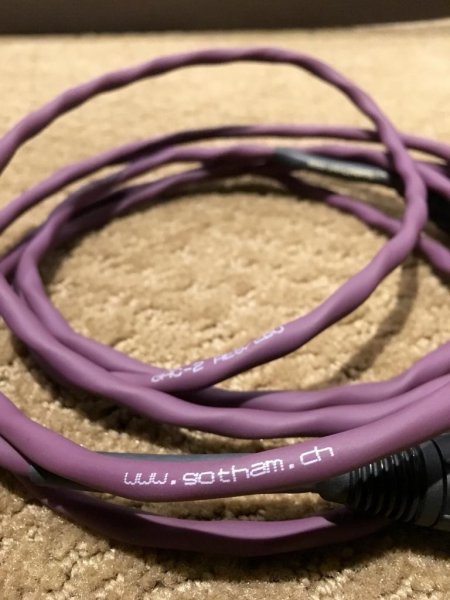There is one other possibility. You heard the difference ,then trained yourself not to hear it. That presumes you were serious when you said that.
You pertinent comment reminds me of remarkable audio industry anecdote: Many, many years ago, when Gene Pits was the editor of "Audio" magazine, he and Noel Lee of Monster Cable had a disagreement as to whether cables deserved to be a category in the Oct. issue of "Audio", referred to casually as the "Audio Bible" in those days. Gene challenged Noel to prove in double blind ABX testing at an AES convention, that Noel could statistically hear differences, in which case Gene promised to include cables as a category.
In the morning session (as recounted to me by SOTA turntable designer Rodney Herman), Noel was able, to a statistically relevant degree, show that he could hear differences. While at lunch the system setup was changed, and in the afternoon session Noel was unable to meet the statistically relevant criteria. Believers on either side will interpret this as they wish, but it did cause ill-will between the parties -- and Gene did not include cables in the "Audio Bible".
Some months later, Gene Pitts published the infamous "Audio" magazine Greiner article, explaining why audible differences between cable were impossible. When I subsequently spoke with Gene, I asked why his attitude of "benign neglect' (he loved that perspective) had turned into one of attacking cables. He said, a direct quote, not an impression, "because Noel got in my face." Pretty amazing for a public figure to admit. Anyway, Gene went on to say that it was a one-time thing. So, whatever, the subject was dead and over for me.
But, not many months later, Gene published an article by Van Alstine declaring that cables did sound differently, though only because of LCR.
Due to all this brouhaha, I had a conversation with Michael Riggs, later editor of "Stereo Review", though at the time editor of "High Fidelity". Wanting to use an area of debate separate from cables and older than the audio cable debate, I asked about amplifier differences. Michael went on to describe the most remarkable story of how as a lay person, he grew up loving music and hi-fi gear, and heard differences between most everything. He went on to describe that however, when he became a professional and joined the AES, and allowed himself to take an ABX test of amplifier differences. He failed to statistically hear a difference ... so as he recounted the story, he no longer hears differences between amplifiers.
I'm sure some out there are thinking, "well of course, there are no differences," while others are rolling their eyes at Michael's religious-like conversion. Whether Michael was week or strong in coping with a new perspective as he did, is in the eye of the beholder. I think he was weak for not being able to include what he had learned from the ABX experience, which was an important and valuable perspective, without having to deny his own previous knowledge and experience.
It's interesting that Gene Pitts and Michael Riggs had no hesitation regarding publishing reviews of all sound-the-same amplifiers (almost always the closing comment in a Len Feldman amplifier review in "Audio"), and listing most every amplifier made in the Audio Bible, while not acknowledging cables.
Sincerely, Bill















